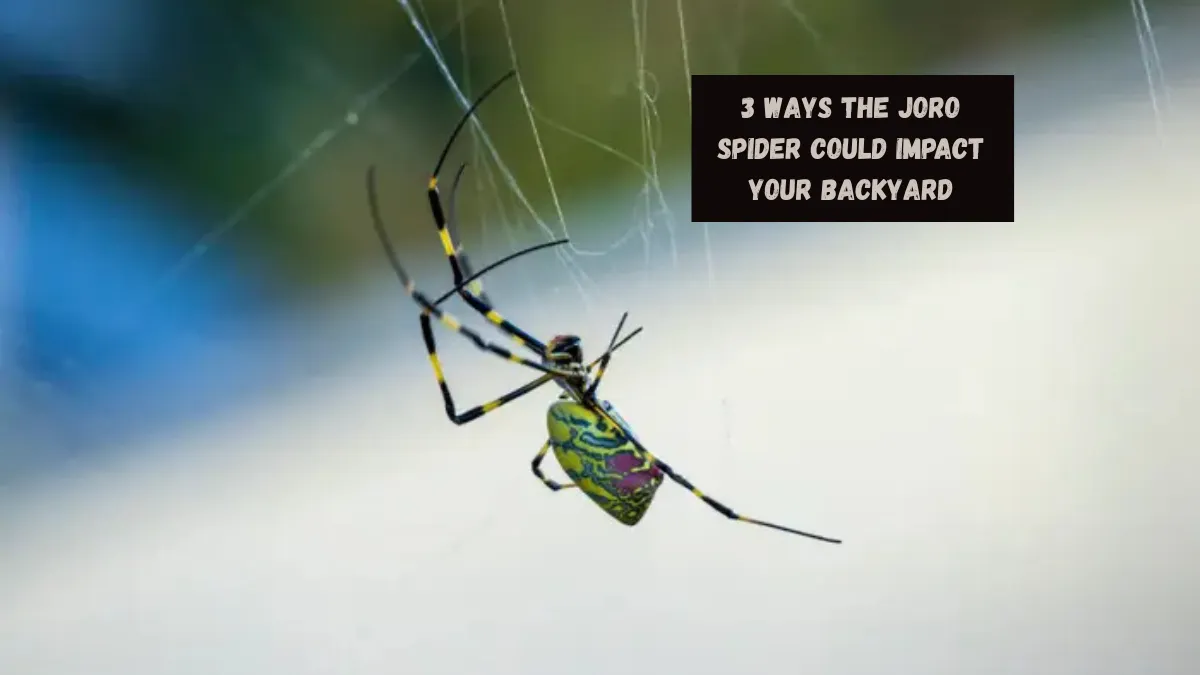The Joro spider, native to East Asia, has made its way to the southeastern United States and is steadily expanding its reach. While these brightly colored arachnids may look intimidating with their large size and vibrant yellow-blue patterns, they’re largely harmless to humans.
However, their presence is creating buzz among homeowners and ecologists alike due to their rapid spread and impact on local ecosystems. As they continue to thrive in new regions, understanding how these spiders could influence your backyard becomes increasingly important.
Their behavior, web-building habits, and potential effects on other insect populations are all worth exploring. In this article, we’ll dive into three significant ways the Joro spider might alter the dynamics of your outdoor space. Whether you’re concerned about biodiversity, insect control, or just wondering what those massive webs are doing in your trees, here’s what you need to know about the growing Joro spider phenomenon.
They Could Change Insect Populations in Your Garden
Joro spiders are voracious predators with a diet consisting mainly of flying insects, including mosquitoes, flies, and even small butterflies. With their massive orb-shaped webs and high placement in trees and shrubs, these spiders efficiently trap a wide variety of airborne bugs.
As their population grows, their hunting patterns could significantly alter the existing balance of insect life in your backyard. This might result in fewer annoying pests like gnats and midges, which could be seen as a benefit. However, it also means potential declines in beneficial pollinators such as bees and certain butterflies that are essential for the health of garden plants.
While current studies suggest Joro spiders may prefer pest species, their impact on local pollinator populations remains under close observation. Homeowners who garden or maintain pollinator-friendly landscapes may want to monitor this closely. The Joro spider’s growing presence could inadvertently shift the natural checks and balances of your backyard ecosystem over time.
Their Massive Webs Could Alter Outdoor Experiences
One of the most striking features of the Joro spider is its immense, golden-hued web, which can span several feet across and is often built high between trees, fences, or even over porches. These webs are not only visually dramatic but also sticky and strong, capable of surprising an unsuspecting passerby.
Homeowners have reported having to constantly clear walkways and decks due to the spider’s prolific web-building habits. These webs, while fascinating, can become a nuisance for people who enjoy spending time in their gardens, outdoor patios, or wooded areas.
The frequency and size of the webs may make routine outdoor chores or leisure activities more cumbersome. Children and pets might become alarmed or entangled, which can detract from the comfort and utility of your yard. As Joro spiders multiply, their silken architecture could reshape how often and in what ways you use and enjoy your outdoor living spaces.
They May Compete with Native Spider Species
As a non-native species, Joro spiders have the potential to outcompete local spider populations for food and habitat. Their ability to thrive in various environments and their aggressive web-building strategy give them a distinct advantage over some native orb-weavers and other spider species.
If they dominate certain ecological niches, they could displace spiders that have long contributed to local biodiversity. This competition might seem subtle at first, but over time it could result in the decline of indigenous spider species that play important roles in pest control and ecosystem balance.
Scientists are actively studying these interspecies dynamics, particularly how the introduction of the Joro spider may influence native food chains and environmental stability. Homeowners interested in maintaining a healthy backyard habitat should be aware of these potential shifts. Encouraging plant diversity and avoiding insecticides may help protect native spiders while still accommodating the Joro spider’s growing presence in a more harmonious manner.
Bottom Line
The Joro spider is more than just a striking addition to your backyard’s wildlife—it’s a rapidly expanding species with the potential to reshape local ecosystems. From altering insect populations and outdoor experiences to competing with native spiders, their presence raises important ecological and practical questions.
While they are not dangerous to humans or pets, their influence is far-reaching. Understanding how these spiders affect your space allows for smarter gardening and conservation decisions. As researchers continue to monitor their spread, homeowners should stay informed and proactive to maintain backyard balance.
FAQs
Are Joro spiders dangerous to humans or pets?
No, Joro spiders are not dangerous. They are not aggressive and their venom is harmless to humans and pets.
Do Joro spiders help with mosquito control?
Yes, they eat mosquitoes along with other flying insects, which can help reduce pest populations in your yard.
Can I remove Joro spider webs without harming the spider?
Yes, you can gently remove their webs. The spiders will often rebuild elsewhere without harm.
Will Joro spiders survive in colder climates?
Recent studies suggest they may adapt to cooler climates, meaning their range could continue to expand northward.
